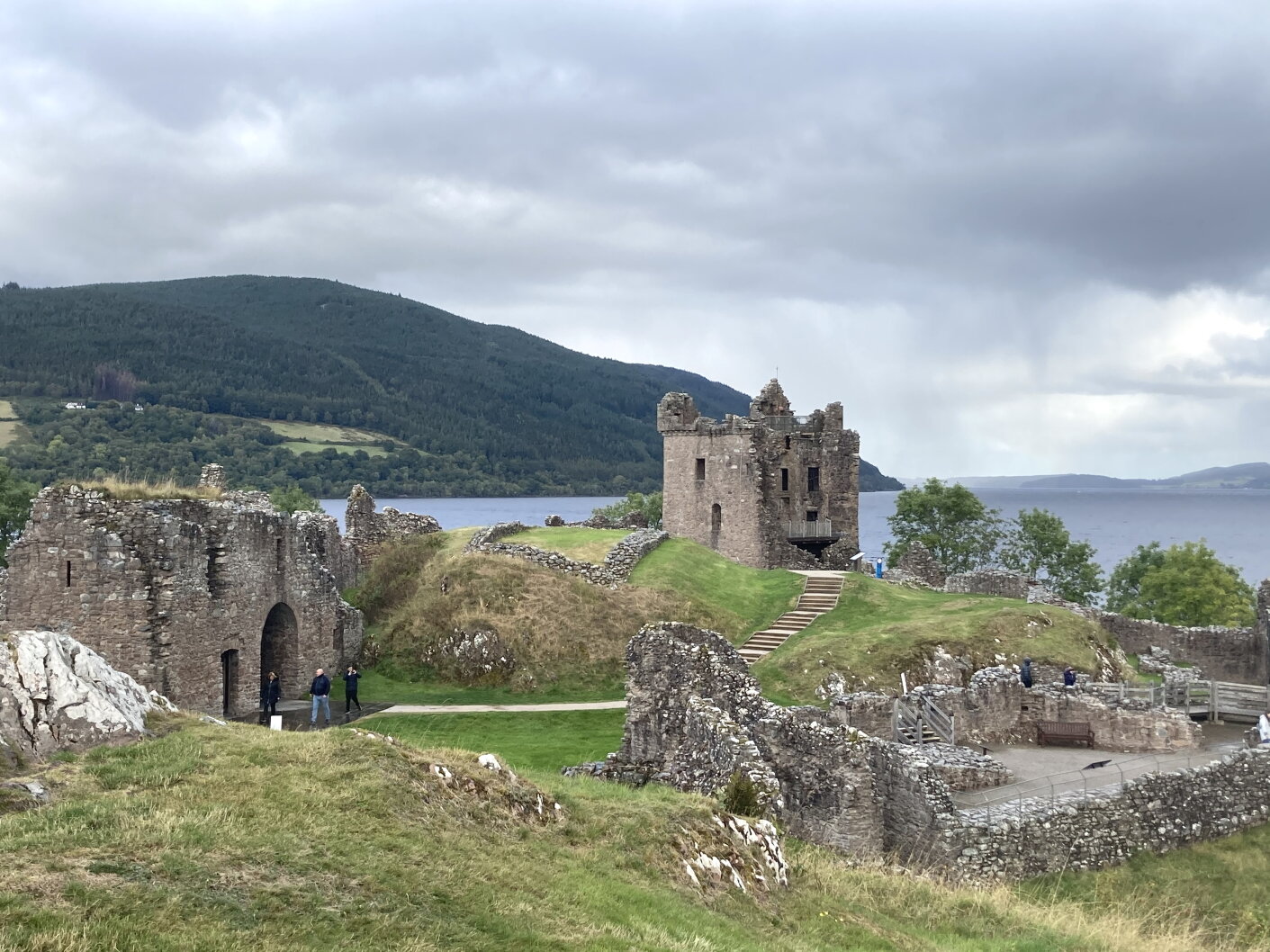Even though the castle has been there 800 years the afore-mentioned virus really has changed everything socially, so booking tickets the night before was a requirement for entry. As we drove in this was reiterated again, and the restrictions and changes outlined. Masks optional when outside, stick to the right of the paths where you can. the cafe is closed for sitting in. There were a few cars there and people milling about but I fully expect the ticket pre-order had maybe caught a few tourists and visitors off guard. Advantage us. As with the loch, the walk down to the castle was equally bigger than what I remembered from my childhood, but with mostly clear skies, a soft breeze, and a reduction in numbers it was incredible to see the castle and it’s surroundings open up as we trod passively downhill.
Castle Urquhart’s history is one of much conflict with the castle itself participating in numerous battles, wars, and raids while in use over a period of roughly 500 years. It shows. A motte and bailey fortification founded in the 13th century, the castle’s place in history gave it a supporting role in The Wars of Scottish Independence changing hands between Scotland and England (and vice versa) before subsequently being owned by a series of Scottish clans and families. During exchanges destructions and renovations shaped the castle into the structure that it is now- a composite of leftovers, extensions, and rebuilds; defenses added as combat continued and time passed. By the end of the eighteenth century the actual castle was roofless, mostly ruin, and a scenic wonder only to artists and tourists alike. Which takes us to this post today… I’m not the artist.
The skies opened as we made our way down the hill to the castle proper as we passed a repro-educational trebuchet and crossed what would have been the drawbridge upto the gatehouse to seek shelter. Like the rest of the castle the gatehouse has suffered destruction in parts with collapsed masonry visible on approach, but the structure itself is mostly still there- as the rain continued quite heavily now it provided shelter to a number of us, though, alarmingly not always socially distanced. We left and took our chances elsewhere in the grounds, exploring the wall remains of the “castle-toun” assortment of smithy, great hall, and doocot. That there were once pigeons housed and farmed in the castle grounds to provide eggs and subsequently meat in the winter surprised me a lot more than I would have thought.
Grant Tower, the towerhouse is perhaps the postcard centrepiece of the castle remains, but due to pesky virus restrictions yet again we weren’t allowed to climb fully to the top. Nontheless we still got to explore the interior of the five-storey structure -one way paths- and hang hands and phones out of windows and openings to take photos of a now quite bleak and stormy surrounding loch. The Jacobite Ferry was on the water- thankfully no signs of any monster activty.












